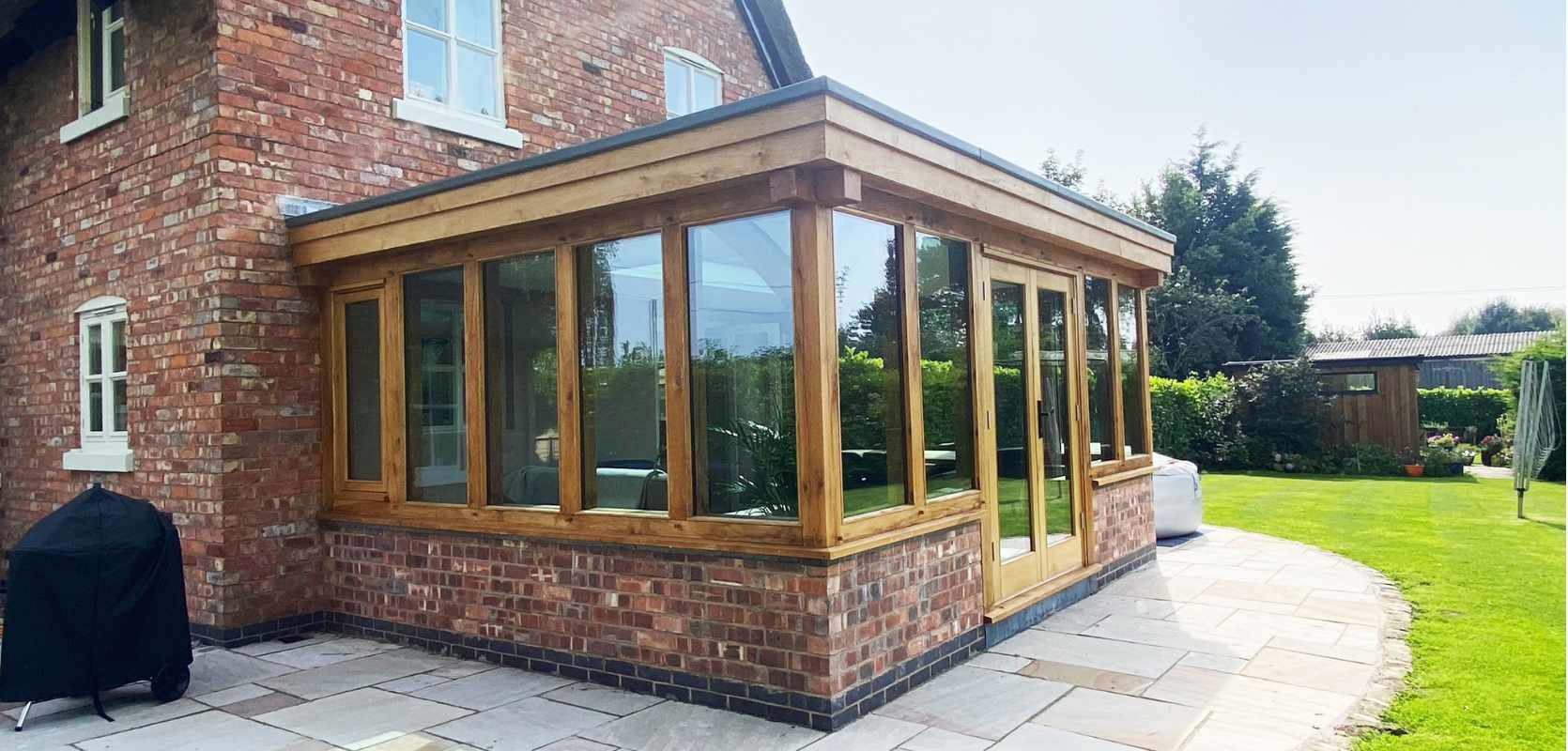The Benefits Of Building With Oak
Contents
Soft, warm, welcoming… Oak is one of the most beautiful and versatile materials you can work with when making enhancements to your home.
And whilst building with oak may not be the cheapest option on your list, the benefits it offers alleviates many reservations regarding expenses that homeowners may have.
From durability and lifespan, to heat efficiency and aesthetics, read on to discover the reason why oak continues to be amongst the most popular building materials today.

6 Benefits of Building with Oak
There are many reasons why you would choose to utilise oak for your home, whether you’re renovating an indoor or outdoor space, large or small.
Sustainable and Eco-Friendly
One of the appeals of oak is the material’s sustainability and eco-friendly status.
Oak is of course naturally occurring, and when sourced from sustainable forests, the harvesting of oak trees does not deplete natural resources, since new trees are planted to replace the harvested mature trees. The new trees further absorb a greater amount of C02 than the older trees which are harvested.
As a natural material, oak does not need to be fabricated or processed using environmentally harmful processes but can be used as an untreated product. This ensures less energy is consumed during the fabrication of oak buildings, as well as reducing the amount of waste created; any waste generated can also be reused or repurposed, such as sawdust.

Durable
Oak is known for its strength and durability as a construction material.
Oak is a hardwood, which means it is slower to grow and mature than its softwood counterparts; the timber produced because of this typically has a more complex and dense composition by the time it is available for harvesting. Density is measured by the rate of growth; oak’s density is on average between 600 kg and 900 kg/m3.
The strength drawn from the density of oak makes it suitable for load bearing. In fact, the strength: weight ratio of oak can outperform steel – and oak only gets stronger as it ages and dries out.
In outdoor spaces, the water-resistant properties of oak ensure it remains durable and reliable for decades to come, even in external environments.
Cost
The expense of oak compared to other construction materials is associated with its quality and performance over time, alongside the fact that as a slower maturing tree, it is not as immediately available as a softwood is.
Whilst oak requires a higher upfront cost, its minimal maintenance requirements and lifespan of 40+ years counteracts this – making it great value for money in the long term.
Bear in mind, oak is also quicker to construct than brick and mortar builds, since it does not require drying times and can be largely constructed offsite, helping to save on labour costs.
Heat Efficiency
As a natural insulator, oak is heat efficient, which helps to maintain temperatures in your home without energy bills skyrocketing; this is particularly important for structures such as conservatories and orangeries which feature large glass quantities and can quickly lose heat.
Whilst additional insulation can be incorporated into the structure for greater thermal insulation, the natural thermal conductivity of oak is preferable to other building materials like metal and concrete.

Resistant to Pests
Oak has minimal maintenance requirements over time – and this can be largely attributed to its high tannin content.
Tannin is the group of acidic chemicals found in liquid sap. The composition of the oak and the tannin produced by the tree together provide a natural defence against pests and insects, fungal infection, and rot. Tannin is still present in cut oak, so will protect the integrity of your structure for decades.
For this reason, oak can remain untreated.
Aesthetic Appeal
The final benefit of oak is perhaps its most obvious: it is a highly aesthetic, luxurious material which can elevate the design of any home.
Building with oak is incredibly versatile – from complete oak frame construction such as extensions to smaller design accents such as porches, oak works well for projects large and small.
The look of oak also changes over time as the wood dries and settles; it develops from a sandy-brown to a silvery colour with exposure to UV rays. This authentic aesthetic is one appeal of oak, however can be slowed with a protective oil for those who wish to preserve warmer tones.
Despite this, the neutral tones of oak complement all design styles, including both traditional and modern tastes.
With the many possibilities oak building design allows, working with oak means you can enjoy the process of enhancing your home, knowing your investment is guaranteeing quality and longevity of your structure.
Explore our oak buildings and experience the remarkable advantages they offer. Discover what we can do for you and embrace the benefits of building with oak.
Interested in this article? Read others like it...